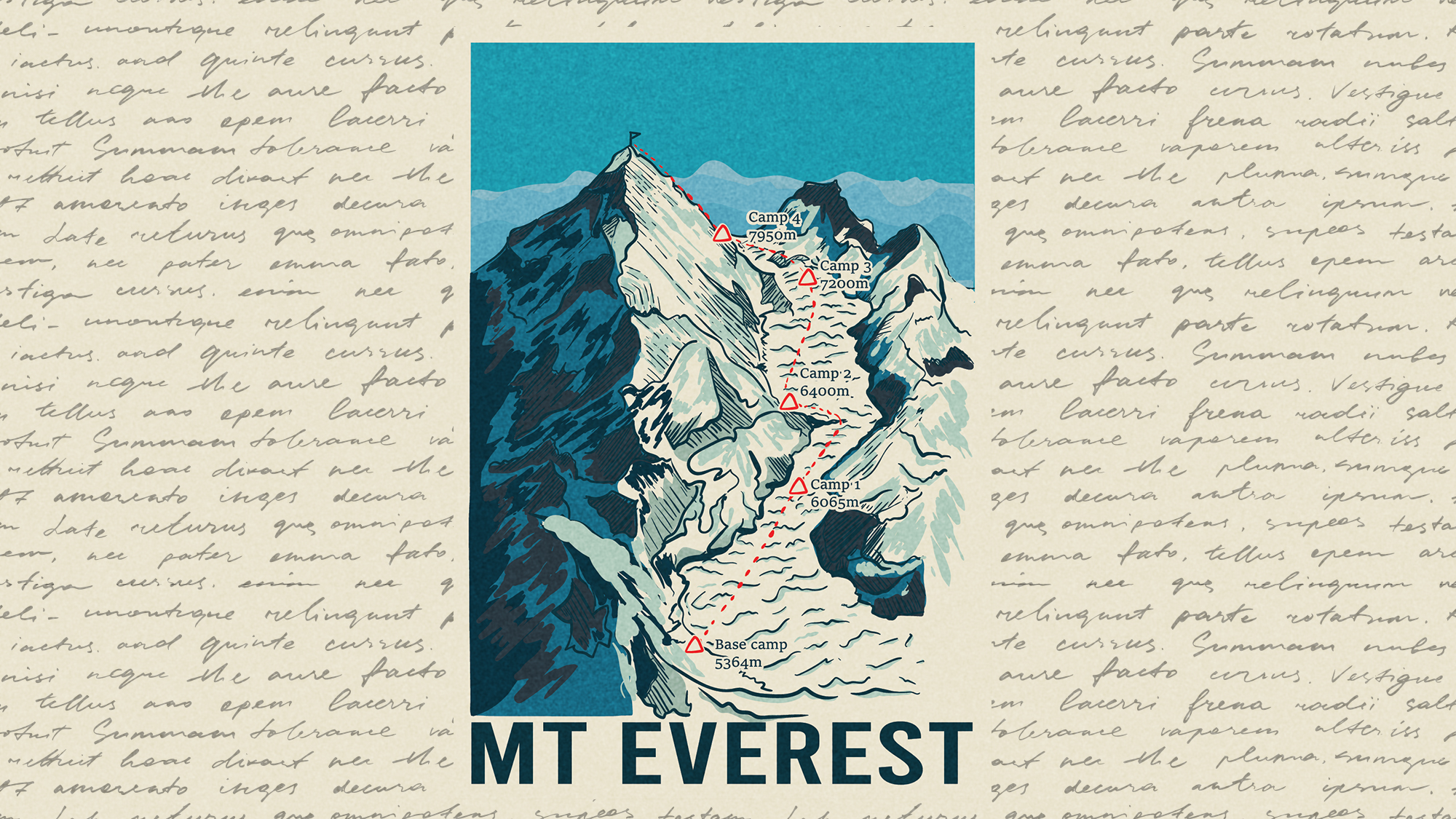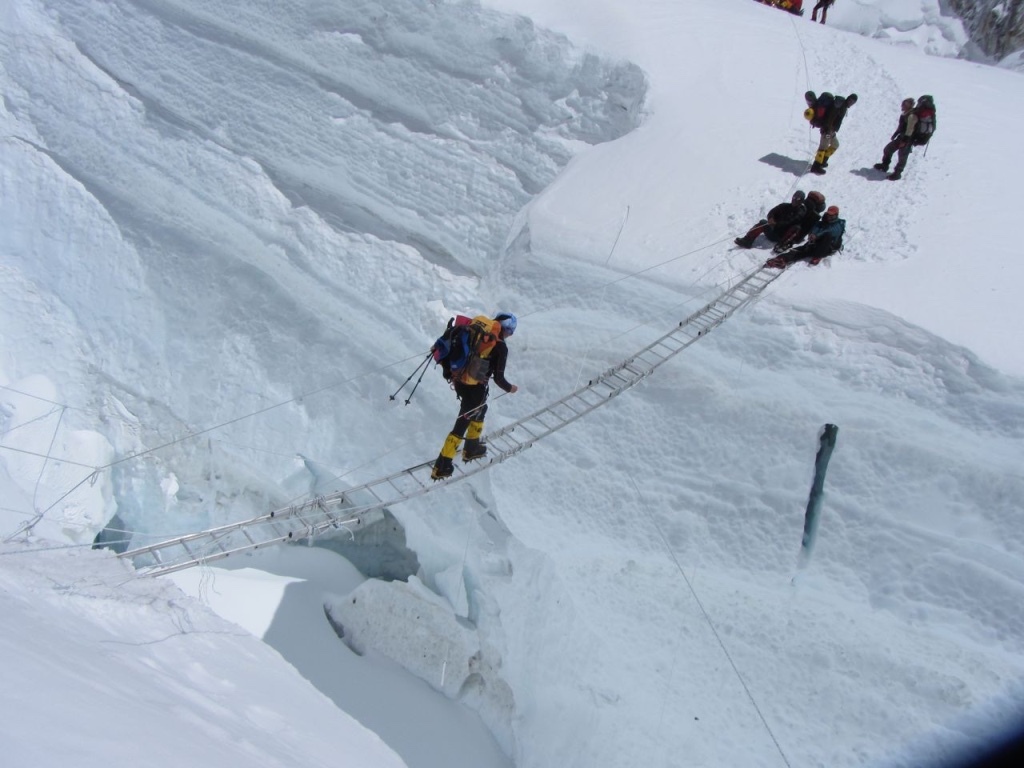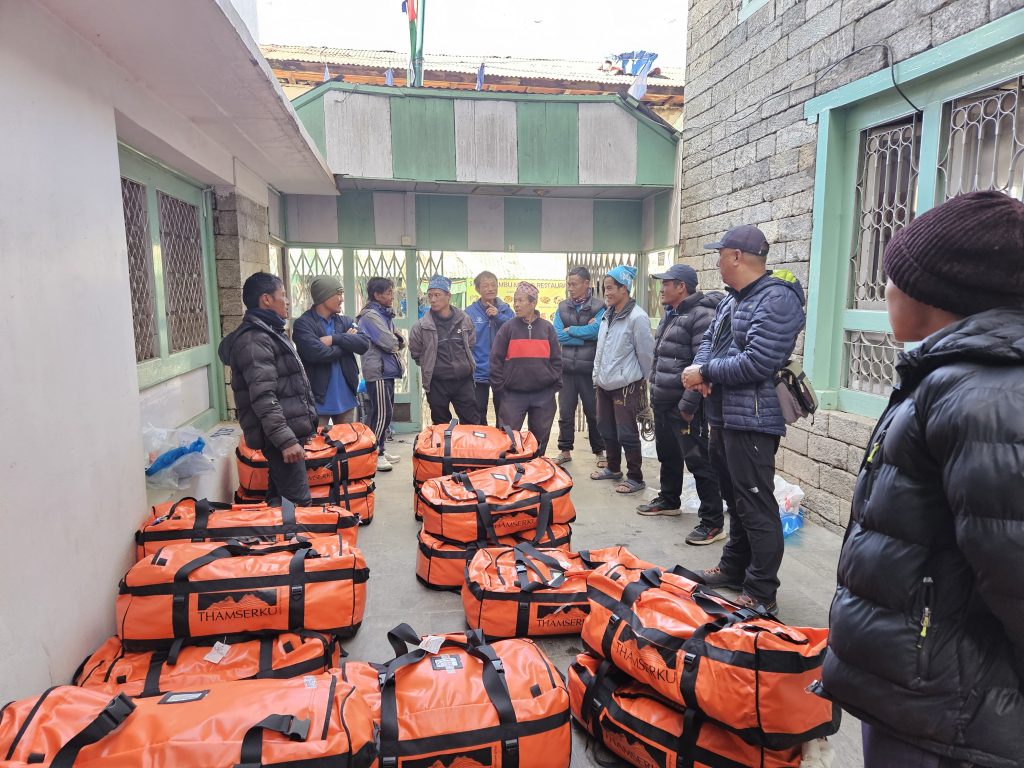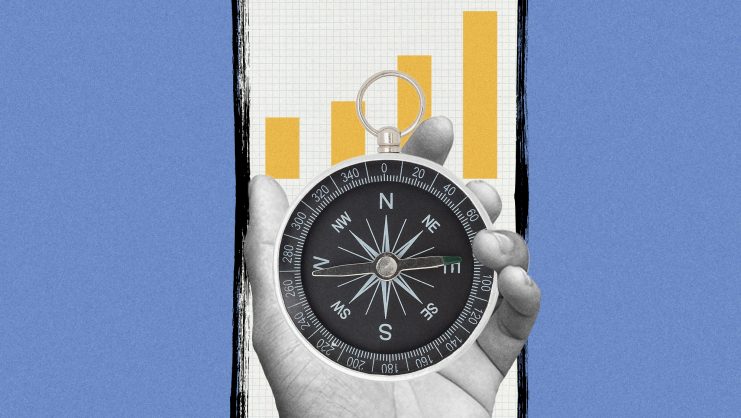Climbing a mountain is not only a journey of physical endurance. It is also a path of profound personal and team growth. May 29th is Everest Day, and it is a fitting moment to reflect on the leadership lessons that mountain adventures can teach us, whether it is climbing an eight-thousander or going on a challenging multi-day trek.
When we talk about leadership we often focus on a leader, yet embarking on a mountain expedition requires a strong, united team. A committed, tight-knit team with a shared vision is essential to reach an ambitious goal.
Studies on high-performance teams have found that three key elements are required to effectively lead a team. The first is to make sure everybody is rowing in the same direction. The team’s understanding of its objectives must be crystal clear, as should the role that each member plays in attaining them. It is critical to strive towards a common goal in high-altitude expeditions and not just focus on personal objectives. The goal may seem simple – to reach the summit – but it is not the only aim. Each and every member of the team needs to return home safe and sound. A successful team is one capable of setting aside its egos and prioritizing common goals over individual desires.
The second key dimension of team leadership centers on excellent interaction, including trust, communication, and a willingness to tackle conflict. On a mountain, trust is not just an intangible value, it is a life insurance policy. In the last one thousand meters of an eight-thousander climb, team members must trust each other and communicate effectively. The ability to address and resolve conflicts is vital to maintaining this trust. Experiences at high altitude are extreme and disputes often arise over trivial things that wouldn’t bother us in everyday life, resulting in confrontation and loss of trust. If this is not managed efficiently, people will not perform at their best the next day, when they are all attached to the same rope. During a mountain trek as a group – for example with colleagues, friends, or students – it’s important for the group to reflect on the personal prejudices we have about others and work to overcome them, thereby fostering an inclusive, cooperative environment.
The third dimension is to create an atmosphere where team members feel they can contribute. People’s contributions to an expedition will not always be physical. While some people may be fast or can carry significant amounts of weight, others provide emotional support, share wisdom, and come up with ideas to make the journey more enjoyable. Recognizing and appreciating this kind of input can transform a group of individuals into a resilient, innovative team. It’s important to create an atmosphere in which everyone feels they have something valuable to contribute to the expedition, thanks to their unique strengths.
No one climbs Everest alone. Teamwork is obviously paramount. Yet there are other leadership traits we can learn on the mountain. For example, empathy and serving others. The leader usually brings up the rear in an expedition. This idea challenges the traditional idea of the leader as the visible, dominant figure striking out at the front of the group. Instead, mountain climbing promotes a vision of leadership focused on support. When leaders are out of the spotlight, they can observe team dynamics, understand the issues each person is facing, and make sure that no one is left behind. It is also a metaphor that true leadership is about serving others and fostering a sense of collective achievement.
Edurne Pasaban climbing Mount Everest
Another key quality is resilience, especially in harsh, unpredictable mountain conditions. This implies the ability to confront and overcome adversity and emerge stronger from it. Often, mountain climbers must wait hours or even days to be able to fly to certain locations or continue walking. Stages are abandoned due to bad weather, and many mountaineers can tell of numerous “failed attempts” when trying to reach a summit. Yet, these are not actual failures. Instead, they are lessons in resilience. These experiences teach us to adjust, persevere, and maintain a positive outlook despite endless setbacks. Celebrating small day-to-day victories and even laughing at our own worries or misfortunes is essential.
Risk management is critical to address change. It is also vital in preventing risks involved in climbing a mountain. It is important to avert dangers resulting from poor planning, since your own life and that of your companions may be at stake. Knowing the route and the existing infrastructure inside out, calculating daily distances carefully, carrying the right equipment, putting together a team with the right number of people, and preparing yourself physically and mentally in advance are fundamental. In addition, it is important to plan how to mitigate risks. Preparing to respond as well as possible to any adversity that may occur also requires planning. The weather can play tricks on you in the mountains, and a team member may start to feel ill or suffer from unexpected sickness. That is why it is essential to plan the right number of days for an expedition, know exactly what insurance to take out, have emergency protocols in place, and have the right external backup that can help you out if necessary.
On Everest, cross-cultural leadership is also vital. The Sherpas, an ethnic group native to the mountainous regions of Nepal, guide us with their profound knowledge of the mountains, sharing their respect for nature and the local surroundings. They also give us continuous lessons in humility and adaptability. On numerous occasions, they are the ones who also climb to the summit of the eight-thousanders and accompany expeditions to the base camps, going out of their way to help, yet they often don’t get the recognition they deserve. Mountain climbers – visitors – share the pujas (religious rituals) of the Sherpas, their dances, their silences, and their sense of humor. Good leadership also involves acknowledging and appreciating local wisdom, learning from other cultures and traditions, and overcoming any cultural barriers to build a united, respectful team.
Finally, it is imperative to take care of one’s own well-being. In highly stressful environments, such as mountaineering, having strategies to help manage stress and sustain both mental and physical health is fundamental. Ensuring a balance between the challenge at hand and getting enough rest, eating well, meditating, having healthy relationships, and asking for help when needed help us to look after ourselves, and therefore remain motivated to lead others in our challenges.
On Everest Day – and every day – let us honor the spirit of the mountains by remembering all the lessons they teach us. Many of these principles (community, trust, innovation, resilience, empathy, and well-being) are universally valid. These values guide us toward becoming better leaders and, ultimately, better people, whether we are climbing a mountain or just going about our daily lives.
© IE Insights.













